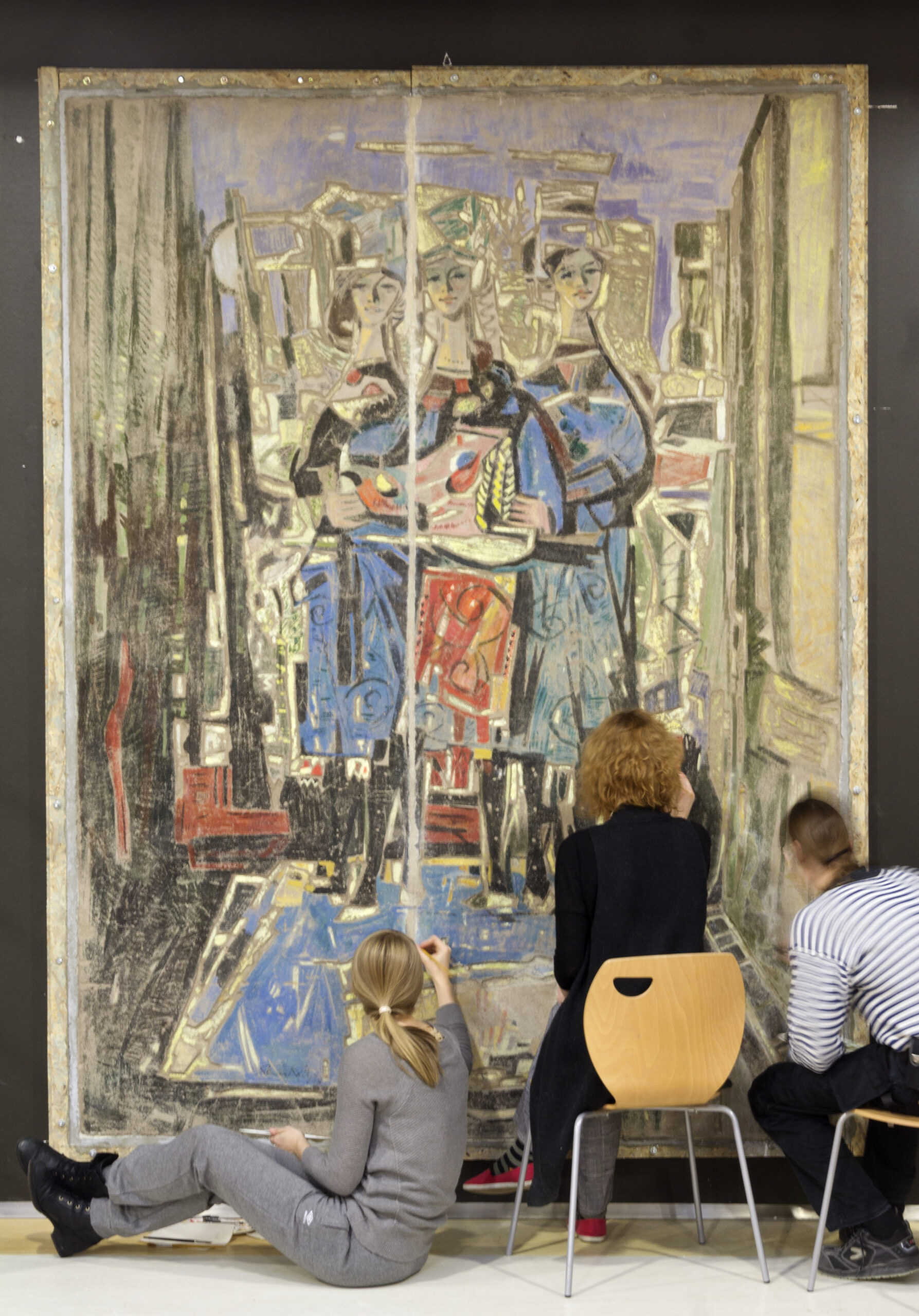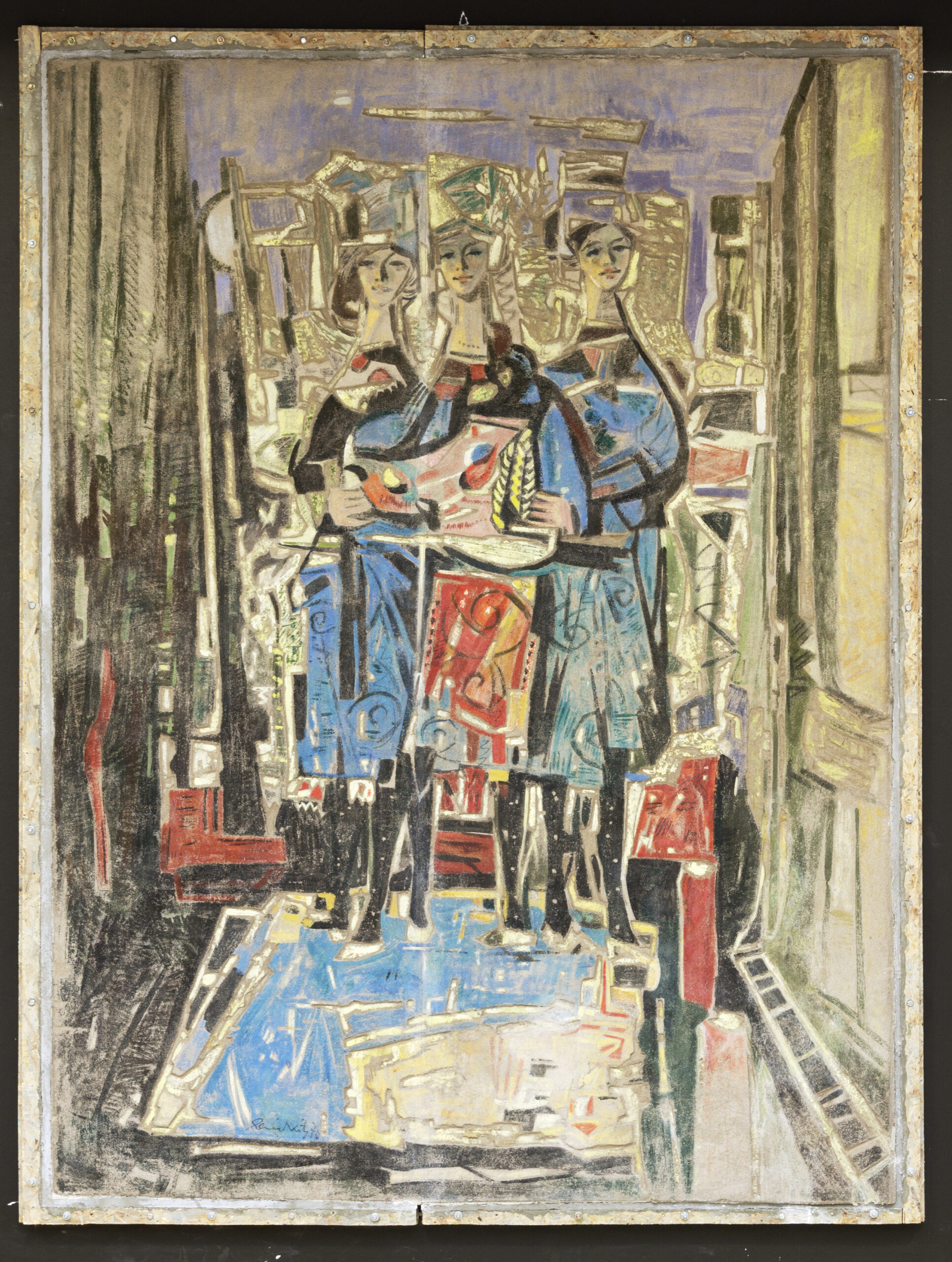Mural Kolm neidu (“Three Maidens”)
Year of completion: 1970
Address: Viljandi County, Viljandi Parish, Vana-Võidu Manor’s barn complex
Author Elmar Kits
Mixed media
Not listed as a cultural monument
The young Republic of Estonia established its first agricultural school in the heart of Vana-Võidu manor in 1920. The school has changed its name nearly ten times within a hundred years, bearing the name Yuri Gagarin Modal State Farm Technical School during the Soviet Era. The educational institution with an ambitious name considered the spiritual and aesthetic education of students just as important as developing their craftsmanship – this could be seen in the form of numerous ceramic and metal pannels, portrait statues of professors, Efraim Allsalu’s grandiose oil painting depicting space flight, and the mural by Elmar Kits decorating the schoolhouse.
The artwork belongs to the artist’s later creative period and depicts three maidens in traditional attire in front of an abstract background. The piece looks like a sgraffito but is actually a sunken relief carved into damp plaster, with surfaces painted already when the plaster had dried. In order to restore the main building of Vana-Võidu manor in 2015, its Soviet Era building extension was demolished. The only way of conserving Kits’s mural in the building was to remove it from the wall and instal it in a new location. The practice of removing murals was still in its infancy in Estonia, and a unique action plan had to be devised in order to get Kits’s painting off from the wall – the painting was protected with glue soaked gauze, cotton fabric, and strong plywood boards before being sawed off the wall.
The new location of the painting became the modern school building constructed from the historical barn complex operating in the manor. To ensure the mobility of the artwork, the pannel was mounted to the wall with the help of boards placed under the painting – this way the painting can be easily moved from one location to another in the future. Today, it can safely be said that this first experimental, risky, and technically difficult undertaking in Estonian context proved itself a suitable method for moving an artwork with an embossed surface.
Although murals are a location-specific artform, and should be conserved in their authentic location, there may be situations in which the only alternative – relocation – is valid. Elmar Kits’s Kolm neidu (“Three Maidens”) is on exhibition in its full glory in the new schoolhouse of the Viljandi Vocational Training Centre, and the work done with it has perhaps even given it an added value. Inspired by the mural, artist Huup created the piece Hommage Elmar Kitsele (“Homage to Elmar Kits”) on a wall of the Tiigi 21 residential building in Tartu in the course of the SmartEnCity project.
Hilkka Hiiop, Johanna Lamp, Helen Volber








